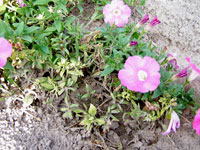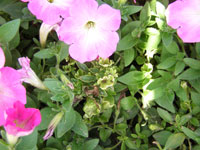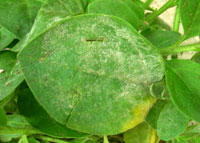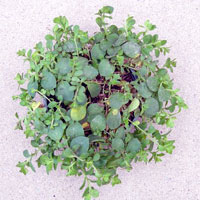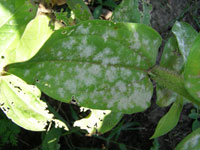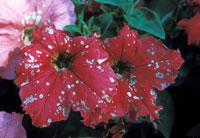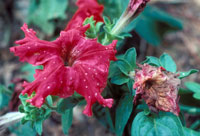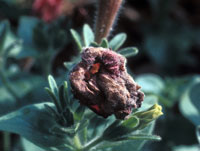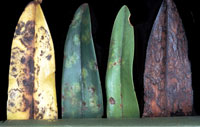Extension > Garden > Diagnose a problem > What's wrong with my plant? > Annuals and Perennials > Petunia > Discolored or spotted flowers
Petunia > Flowers > Discolored or spotted flowers
1 of 4
Aster Yellows
Phytoplasma
- Leaves are small and yellow on a few to all stems
- Flowers are small pale green to white and underdeveloped
- Clumps of weak shoots known as witches broom develop throughout the plant
- Infected plants are often stunted
- Often one to a few random plants within a flower bed are infected while others remain healthy
- More information on Aster Yellows
2 of 4
Powdery Mildew
Oidium sp.
- Powdery, fluffy white spots or blotches on leaves, stems, and flower parts
- Tiny black round spheres may be visible within white spots late in the season
- Spots typically start on lower leaves but can spread to cover the entire plant
- Severely infected leaves may be completely covered in white or grayish white fungi
- In some cases, leaves become curled or twisted or turn yellow due to the infection
- More information on Powdery Mildew
3 of 4
Gray Mold
Botrytis cinerea
- Large brown spots or blotches on leaves
- Leaves or entire plant may be completely blighted, brown, and wilted
- Blossoms or petals may turn brown and drop off prematurely
- Gray fuzzy mold develops on rotted tissue under humid conditions
- Disease develops during cool, wet weather
- More information on Gray Mold
4 of 4
Tobacco Mosaic Virus (TMV)
- Symptoms may vary depending on cultivar, age of plant and other factors
- Leaves have a mosaic pattern of light and dark green
- Leaves may be distorted, curled or twisted upward
- Lab test needed to identify which virus is causing the problem
- More information on TMV




